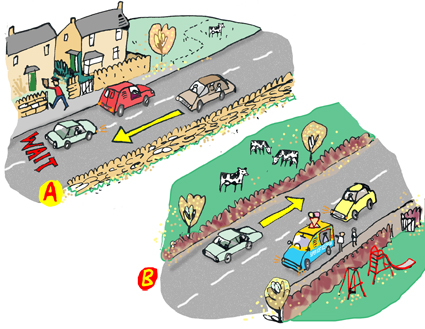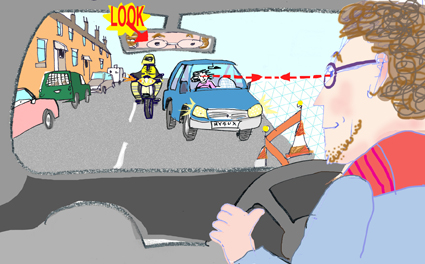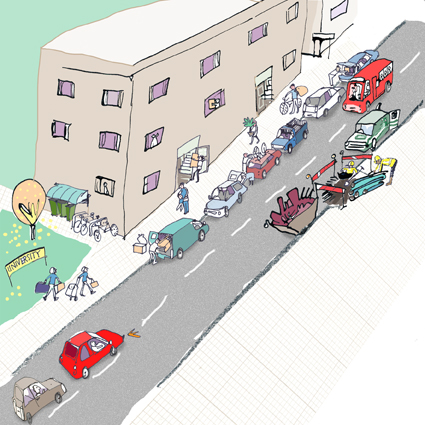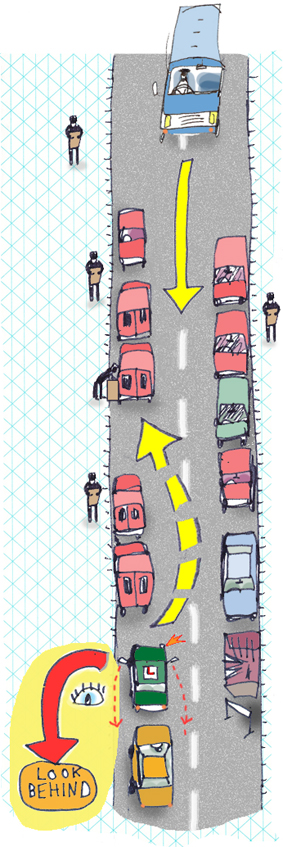
What to Expect on Your First Driving Lesson in London
What to Expect on Your First Driving Lesson in London | Wimbledon Driving School Home
‘Meeting traffic’ is a technical term for a simple situation. It occurs when an obstruction makes the road too narrow for two opposing vehicles to pass. Only one vehicle can pass at a time. Meeting traffic tells you how to deal with the situation safely.
You need good anticipation skills for the manoeuvres that follow. Always follow the MSPSL routine:
Mirror – Signal – Position – Speed – Look
with the ‘Look’ element broken down into its LADA constituents:
Look – Assess – Decide – Act

A Obstruction on your side of the road. If there’s a car parked ahead of you on your side of the road, but the other side of the road is clear, oncoming traffic has priority. You must slow down or stop to let oncoming traffic pass first.
B Obstruction on the opposite side of the road. If the parked car is on the opposite side, and your carriageway is clear, you have priority. Oncoming traffic should slow down or stop to let you pass. Bear in mind that priority is something that you give to others, but never take as a right. When you have priority, proceed with caution.

Obstructions on both sides of the road
When the road is narrowed from both sides, neither driver has priority. Do not assume that the other driver will give way. To take control of the situation, you should slow down or stop.
Try to make eye contact so that you can decide who is going first. If the other driver flashes, they could be letting you know that they can pull into a gap to let you pass.
Or they may be telling you that they think it’s safe for you to proceed. Don’t take this message at face value. The other driver may have overlooked something. If they didn’t check their mirrors, for example, they could have missed the fact that there’s another car coming from behind that could already be moving out to pass them.
So, if the other driver flashes, proceed with caution when you think it’s safe to do so.

If you do have to stop, pull into what’s known as a ‘holdback position’. A holdback position is about two car lengths from the obstruction, and a safe distance out from the kerb. Adopt a half-in, half-out position which is as far out from the kerb as is safe.

Before you enter a stretch of road with oncoming traffic and lines of parked cars on both sides, you should check your mirrors for following traffic.
If a vehicle follows you into the narrow stretch, and the passing place you need is only big enough for one car, there’s little point using it.
The following vehicle will have nowhere to go and the road will become blocked.

Wimbledon Driving School
The Long Lodge
265 – 269 Kingston Road
Wimbledon,
London, SW19 3NW
Phone: 0800 511 8800

What to Expect on Your First Driving Lesson in London | Wimbledon Driving School Home

Learning about speed limits is an important part of driving, though it can take time
If you’re preparing for the theory test or starting driving lessons, road signs can seem